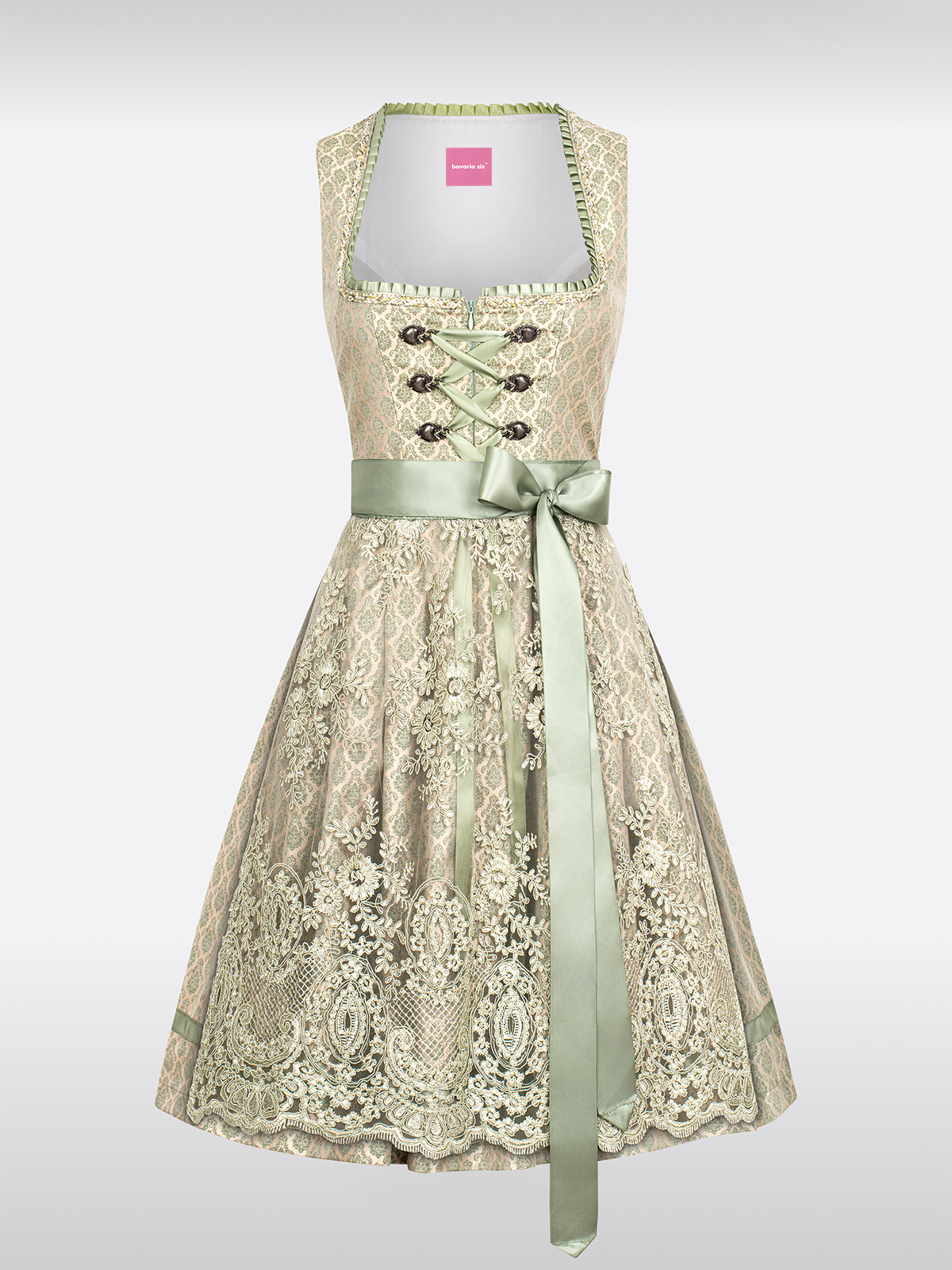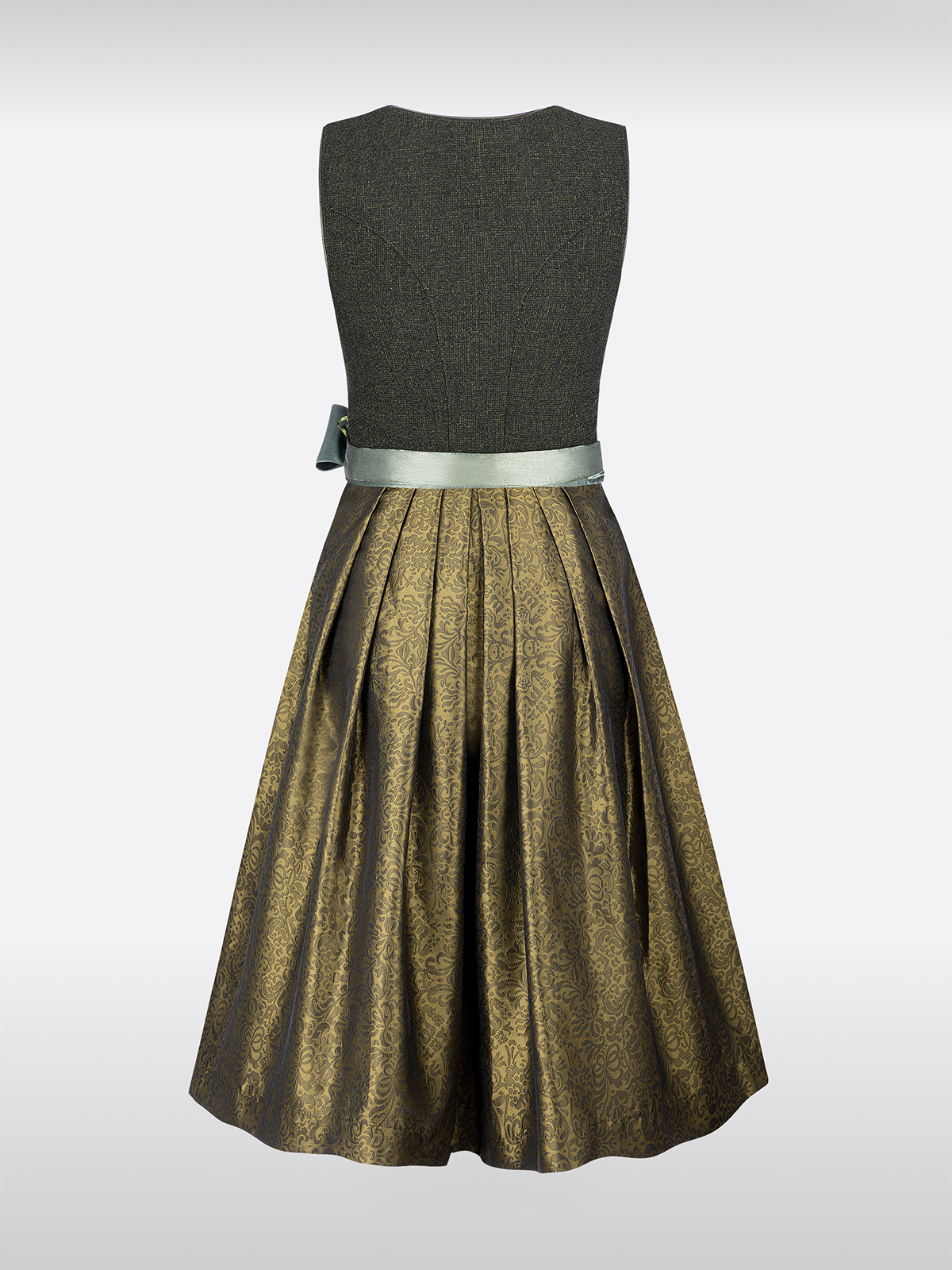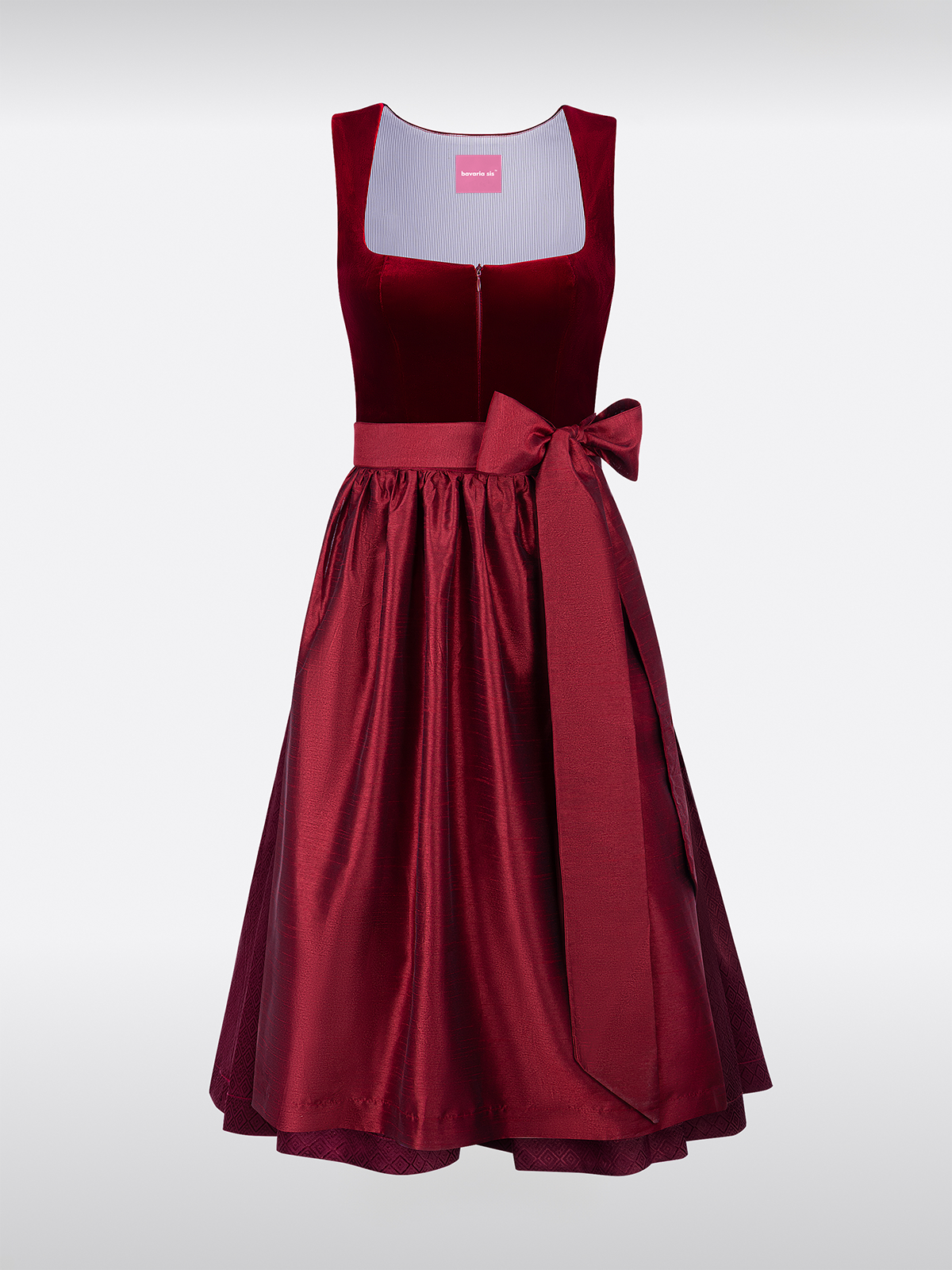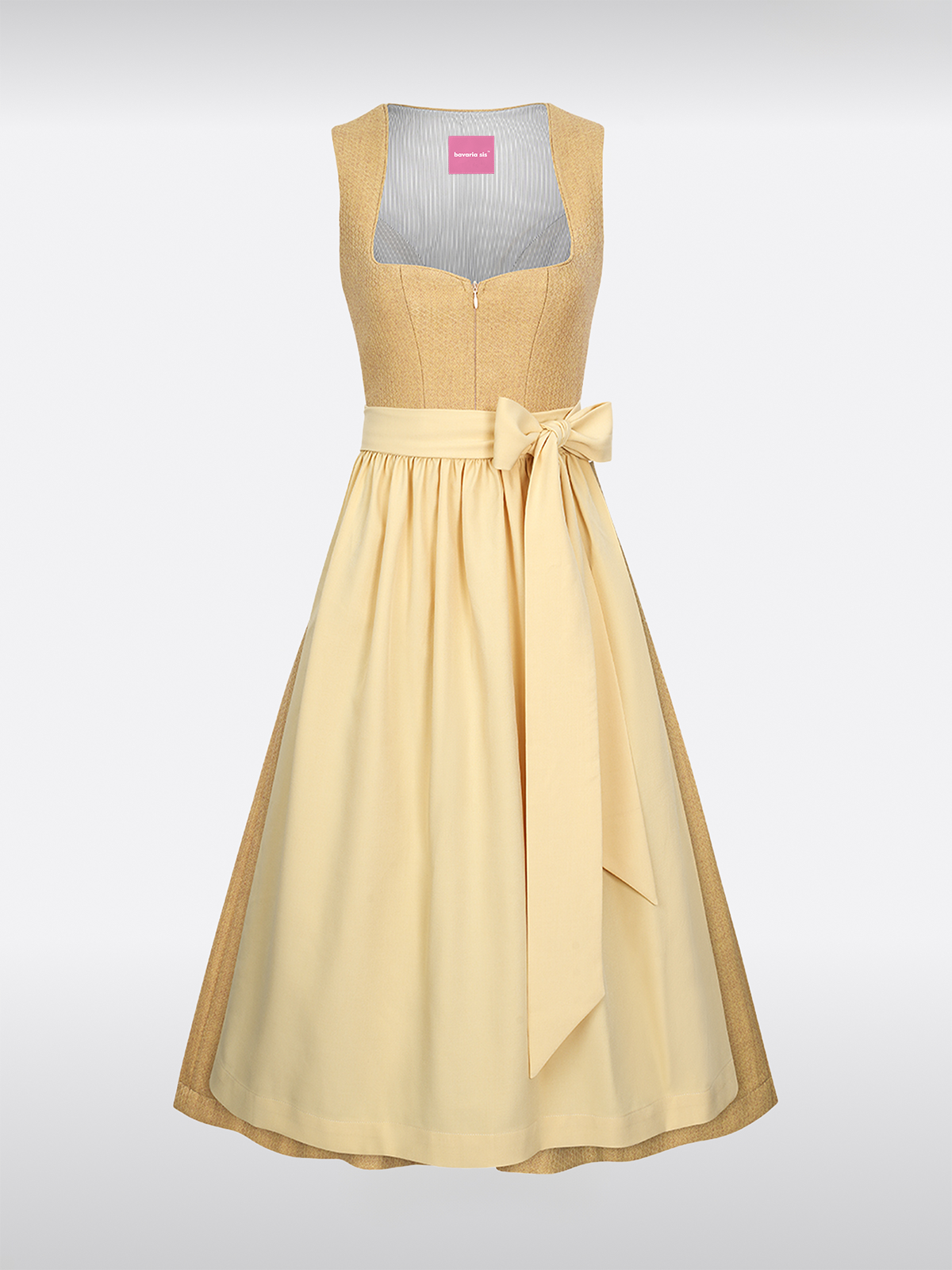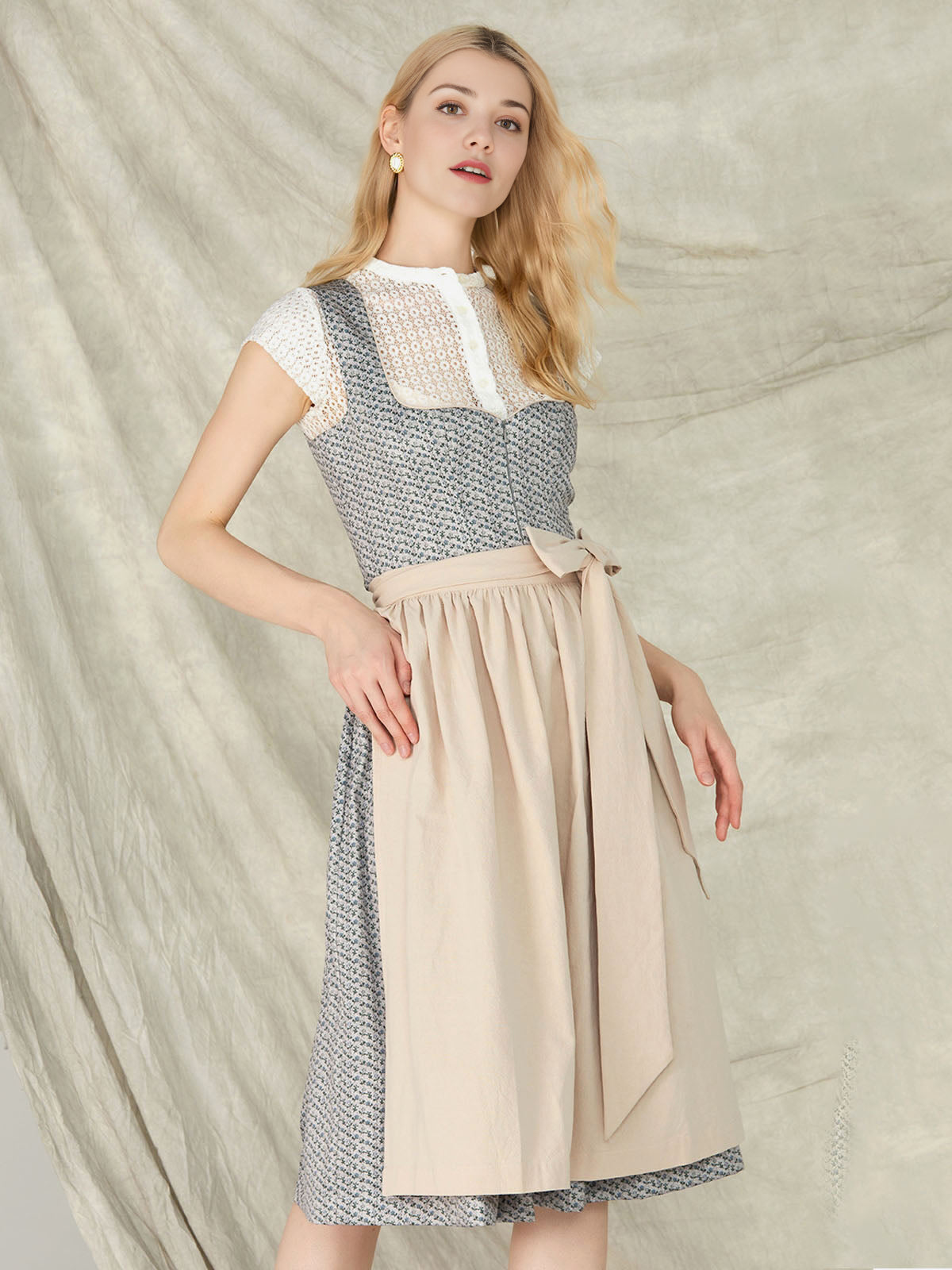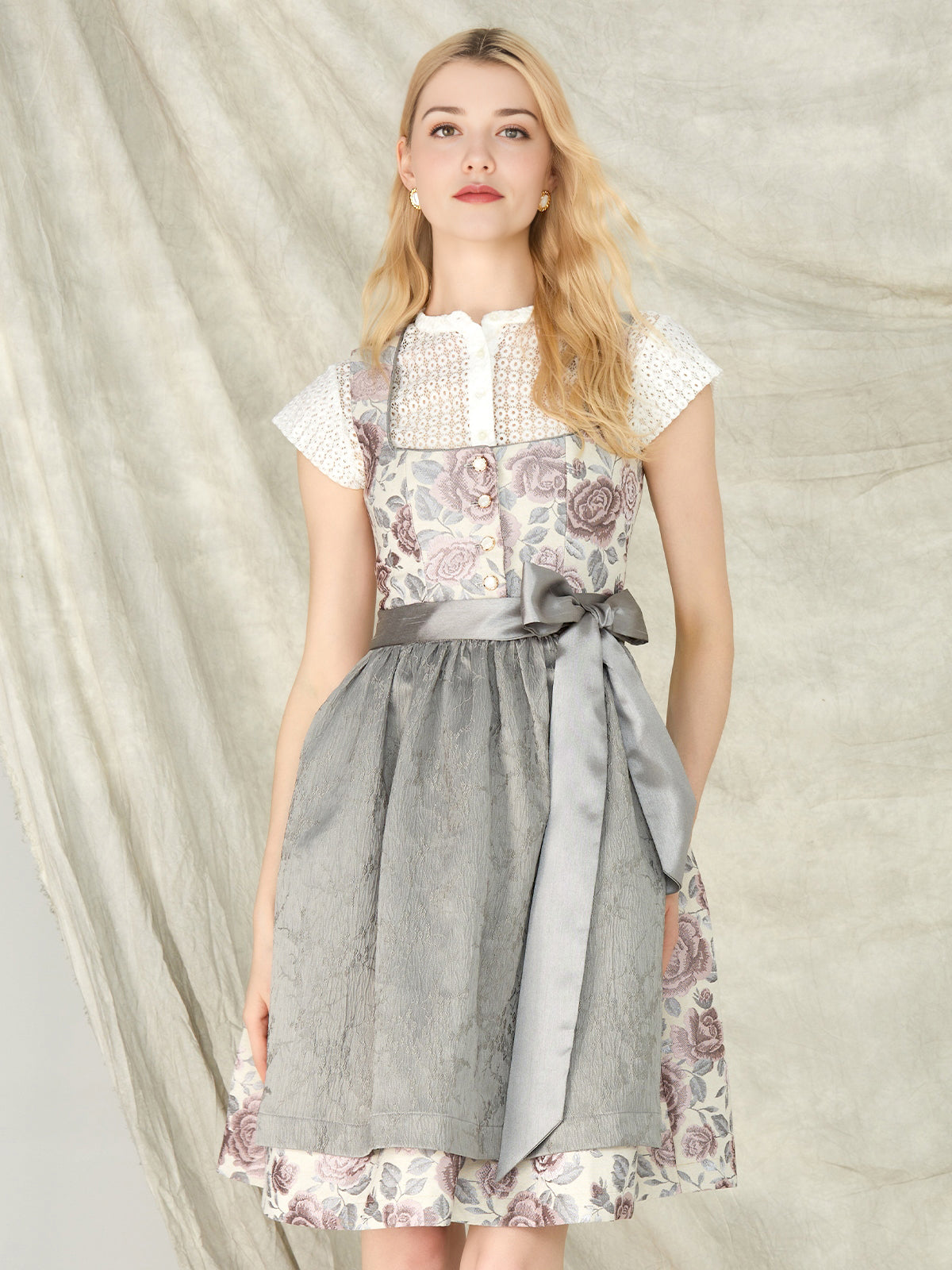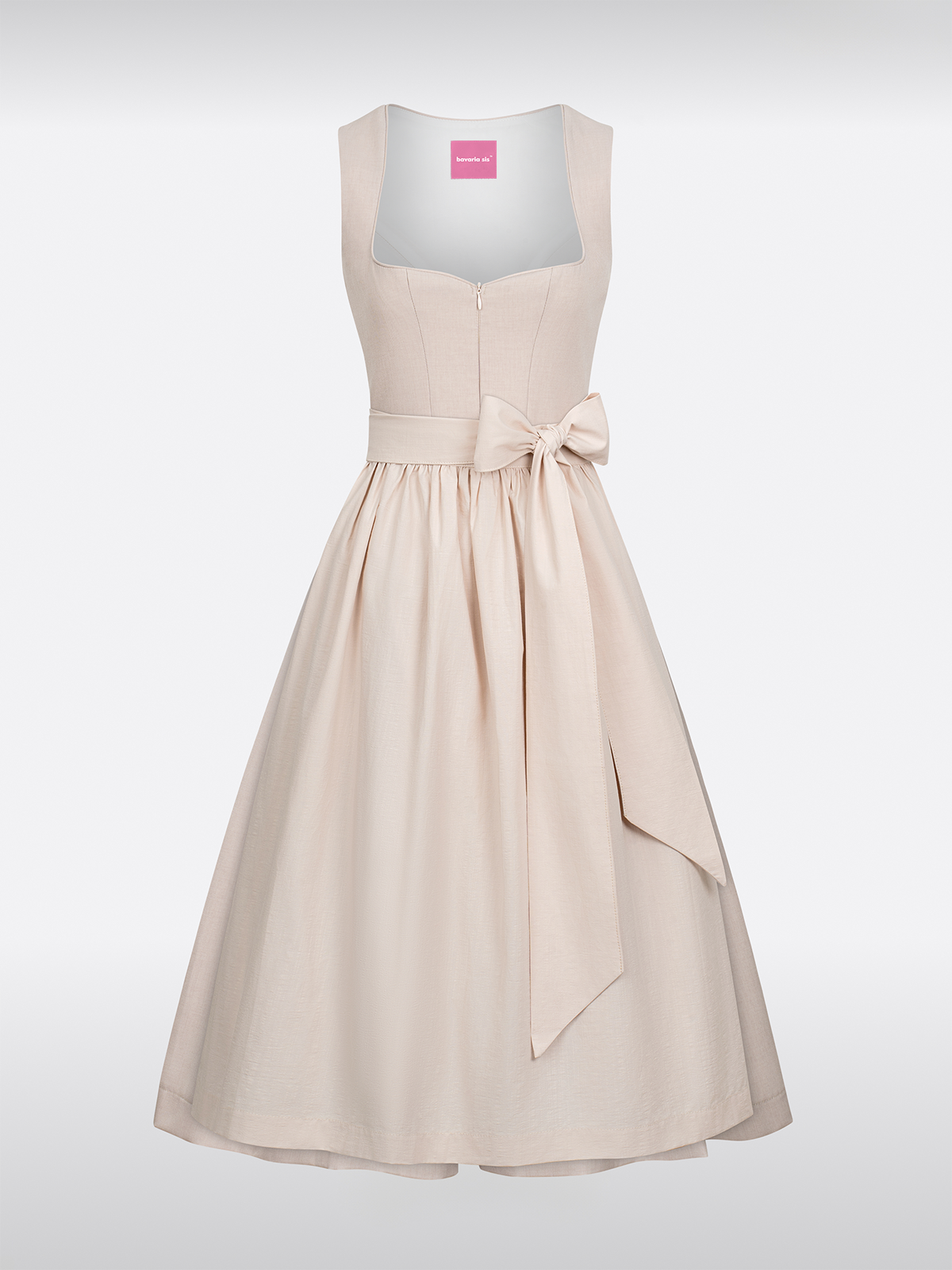The touch of a fabric can set the mood – linen is like the morning dew, blended fabrics like a campfire at night. In the Dirndl Olive Green Lab, we investigate how different materials shape not only the look but also the feel of a traditional dirndl. From the green dirndl blouse to the green velvet dirndl, each fabric tells its own story.
Experiment 1: Linen – The Freshness of Summer
Linen is the classic among dirndl fabrics. Dirndl olive green Linen looks airy and natural, almost like a touch of grass and leaves. It's breathable, making it perfect for hot summer days. But beware: Linen is also notorious for its tendency to wrinkle. Those seeking a flawless look will either have to rely on a stiff ironing technique or accept the charming wrinkles as part of the charm.
The green linen dirndl blouse feels cool against the skin, almost like a second skin. The fabric shimmers slightly in the sunlight, lending the entire outfit a rustic elegance. However, if you're looking for a dirndl for traveling, you might want to opt for a more robust material—linen is beautiful, but not exactly light for travel.
Experiment 2: Cotton – Soft and Versatile
Cotton is the all-rounder among fabrics. green velvet dirndl The cotton blend offers a pleasant blend of strength and softness. Unlike pure cotton, it's less prone to wrinkles and remains comfortable all day long.
The olive green dirndl in cotton feels like a soft cloth against the skin. It's ideal for long days at a folk festival or local festival because it absorbs sweat and is easy to wash. However, cotton has one drawback: It dries more slowly than synthetic fabrics, which can be problematic for spontaneous adventures.
Experiment 3: Mixed fabrics – the future of the dirndl?
Here's the surprise: What happens when you combine traditional fabrics with modern technology? This green velvet dirndl in an innovative blend of cotton and polyester is proof that tradition and progress can go hand in hand.
This fabric is quick-drying, wrinkle-free, and yet soft enough to fit comfortably. The olive green dirndl version in a blended fabric feels almost like silk, without the care required. However, purist dirndl fans might be skeptical – is this still a real dirndl if the fabric is almost synthetic?
Sensual details: When fabrics tell stories
A dirndl is more than just a piece of clothing—it's an experience. The green dirndl blouse, with its delicate brass buttons, feels cool to the touch. The leather belt around the waist creaks softly as you move, a subtle sound reminiscent of old farmhouses.
And then there's the green velvet dirndl fabric itself: Rubbing it between your fingers, you can feel its delicate texture, almost like velvety leaves underfoot in an autumn forest. This feeling is hard to put into words, but unmistakable—it's the luxury of a traditional dress that feels like a treasure.
Sudden twist: What if the dirndl isn’t made of fabric?
Here's the unexpected twist: Imagine the olive green dirndl isn't made of fabric, but of recycled plastic bottles? Sounds crazy? Nothing has become impossible in the fashion industry. Some designers are already experimenting with sustainable alternatives – and the result is astonishing: The dirndl looks and feels the same as always, but it has a completely new story.
The green dirndl blouse Made from recycled materials is not only environmentally friendly but also more durable than conventional fabrics. Who would have thought sustainability could be so beautiful?
What do you prefer: nature or technology?
After all these experiments, the big question arises: Do you love the natural feel of linen and cotton, or are you fascinated by the advantages of modern blended fabrics?
- Natural fabrics such as linen and cotton offer authenticity and a distinctive look.
- Technical fabrics promise comfort and ease of care.
- Sustainable alternatives could be the future of the dirndl.

